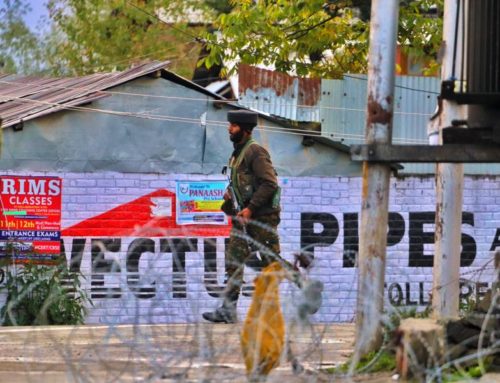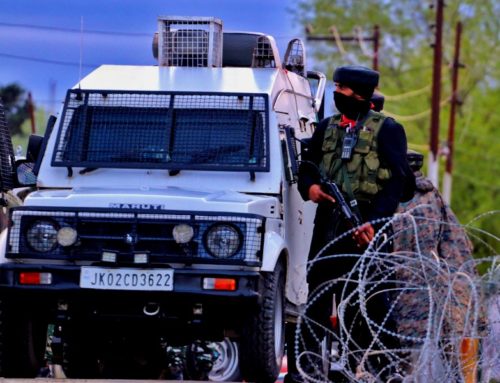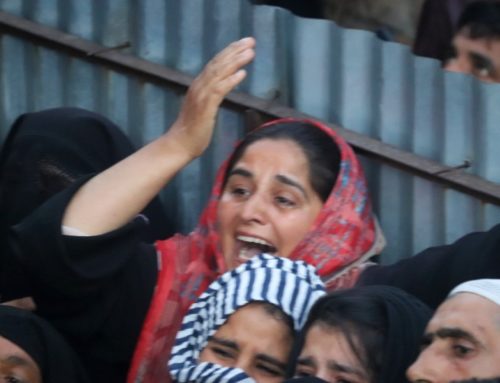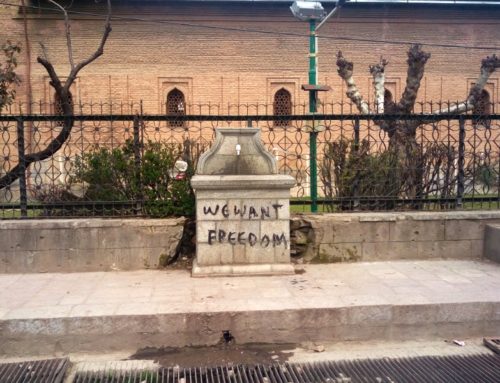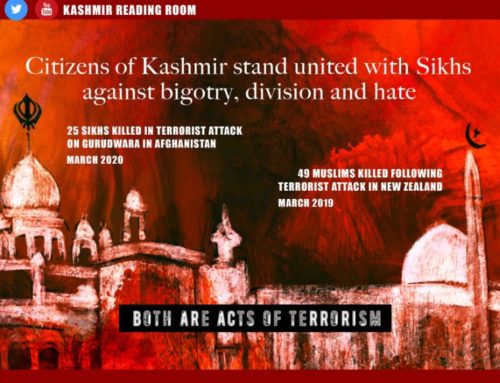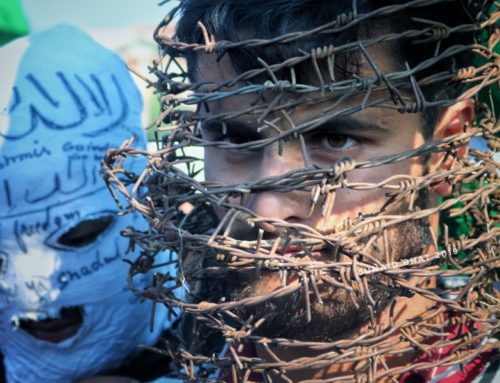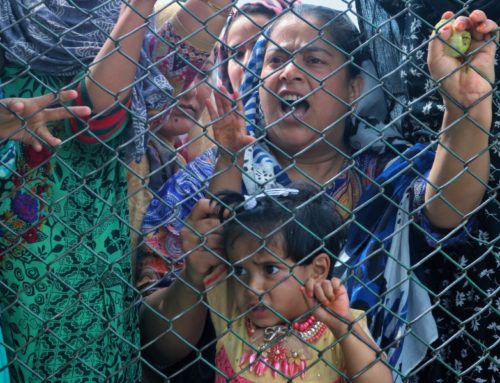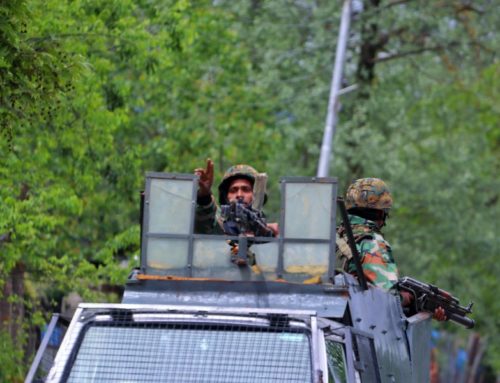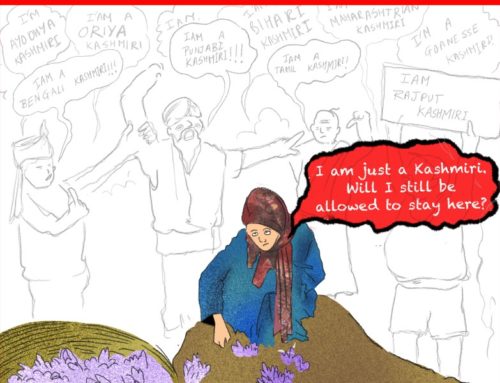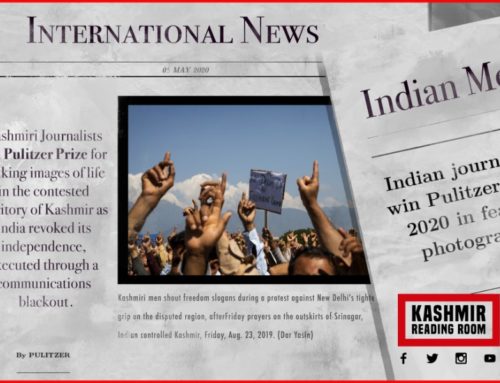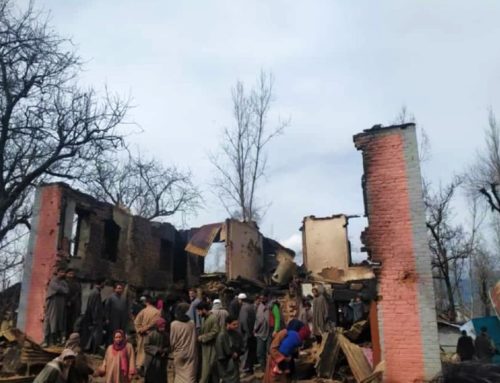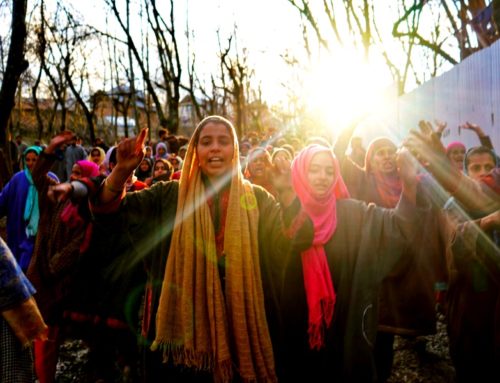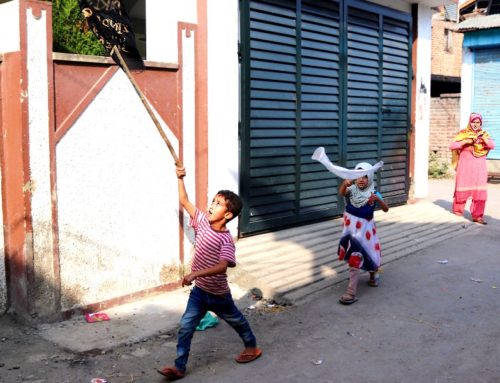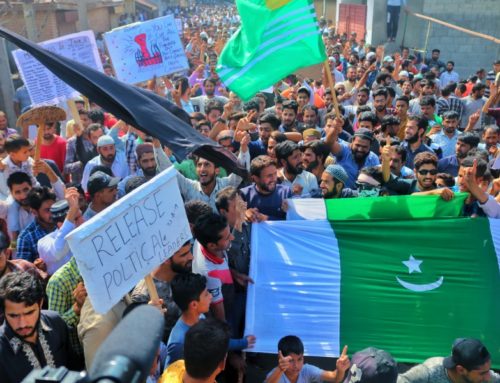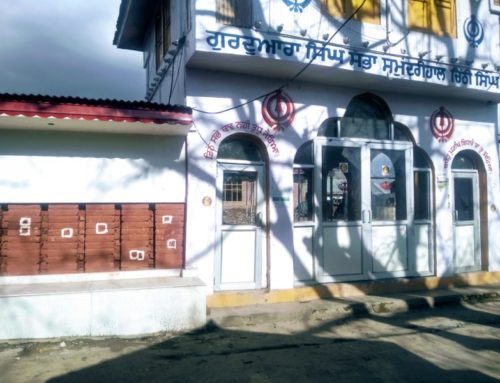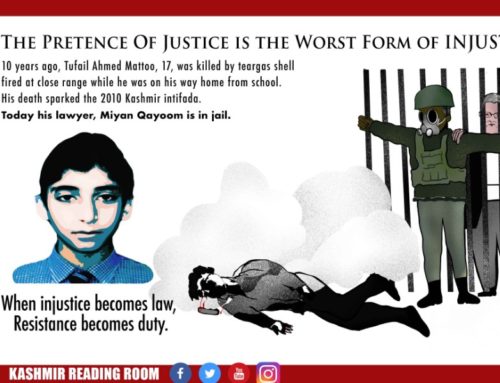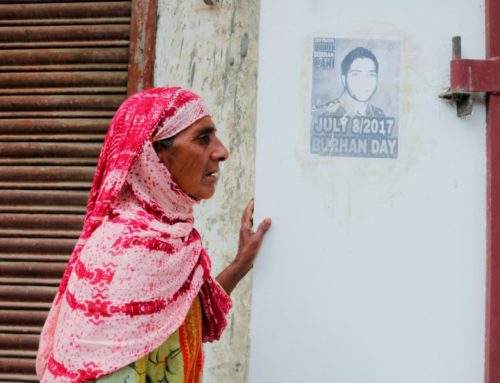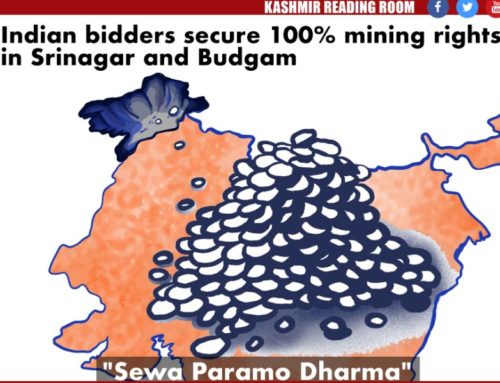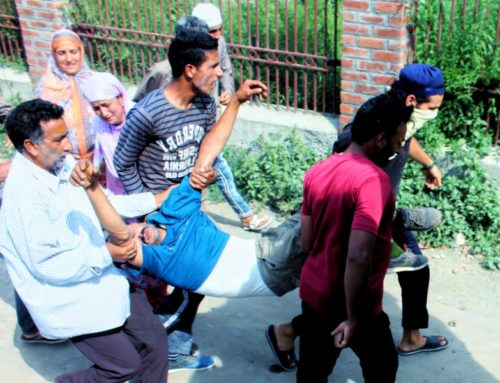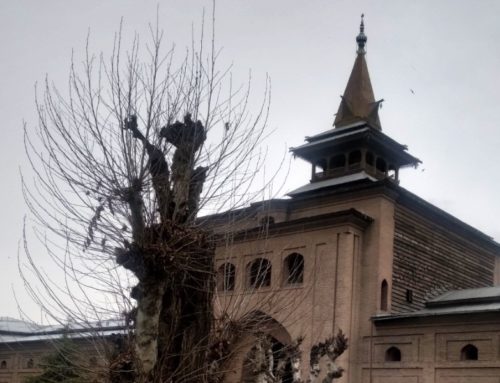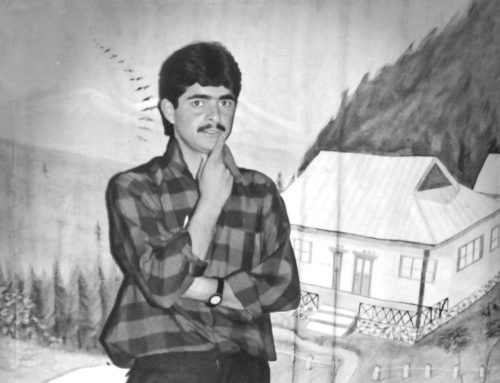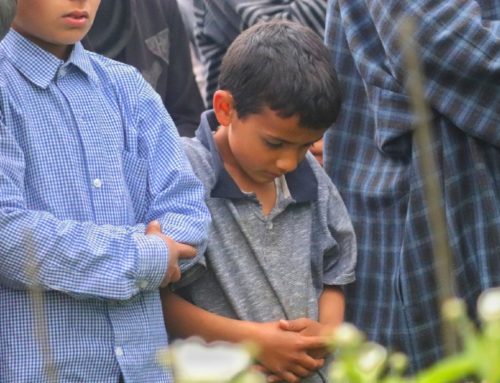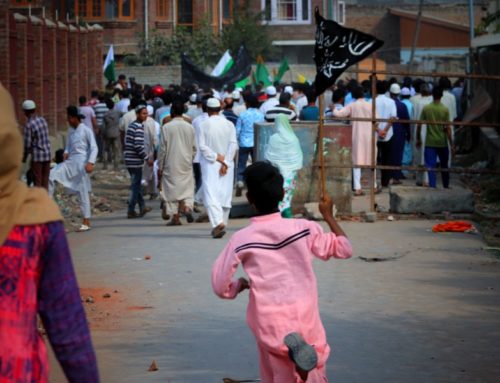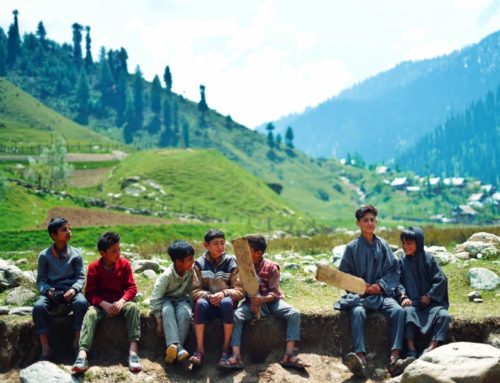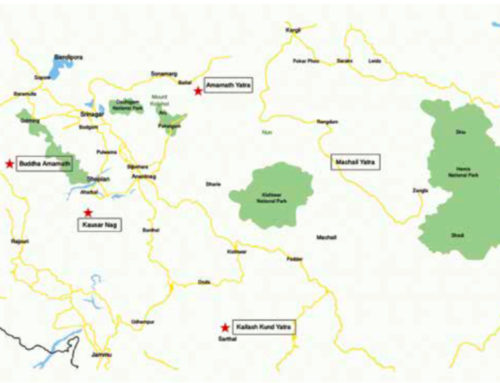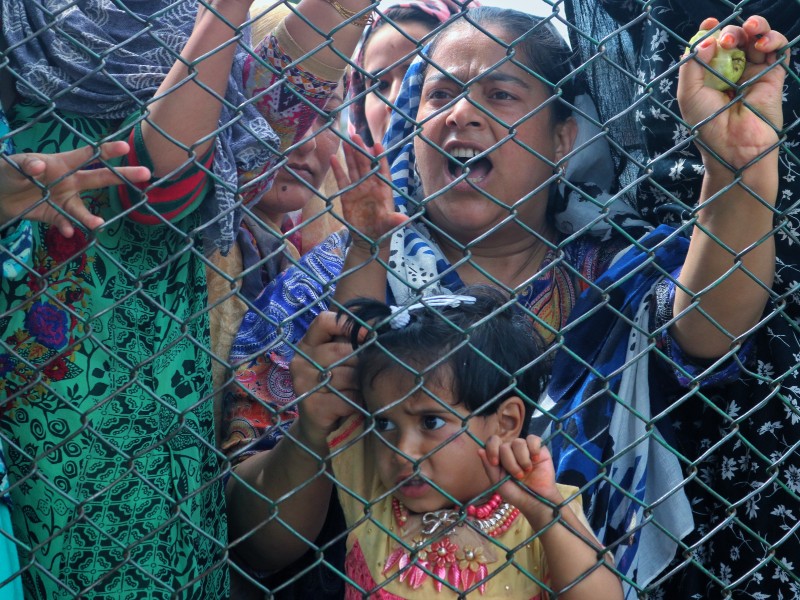
Parachute Empowerment
By A. Khalil
Recently, a non-governmental organisation (NGO) by the name All Jammu and Kashmir Youth Society (AJKYS) organised -what they called- the “first of its kind” fashion show in Srinagar. The Show was organised at SKICC and Tagore Hall. They claimed that the fashion show would break stereotypes and challenge patriarchy. The show , according to the organisers was a step towards showcasing normalcy, modernity and progressiveness.
The fashion shows were organised in the same week when schools were shut as precautionary measures since Kashmir witnessed the highest single-day spike this year in new COVID-19 cases, taking the tally to 1,34,827. The situation is currently so grave that doctors have been raising an alarm over non-availability of beds in the hospitals. Meanwhile, the organisers claim that more than 500 guests attended the show in which more than 30 male and female models[1] walked the ramp. The models who walked the ramp included DSP Sheikh Adil, Major Abhishek and Captain Shoaib from Indian army.
The façade of “normalcy”
To begin with, one wonders what is “normal” about a fashion show being organised under a dreadful military occupation in a war zone? How does a fashion show counter the primary source of abuse that Kashmiri women suffer? What sort of feminism places value on a curated fashion show that uses women as tools to project a false narrative?
Indian society itself suffers from toxic misogyny and patriarchy. Practices such as female foeticide, honour killing, sexual assaults, acid attacks, street sexual harassment, stalking, rapes, unequal wages are common in India. Will fashion events organised in Haryana fight honour killing? Centuries old patriarchy is not abolished just by a fashion show.
The organisers of these shows claimed that these fashion shows were organised to ‘break stereotypes’ in Kashmir and uplift women of Kashmir. Such claims invisibilise the political resistance and struggles of Kashmiri women. Kashmir is one of the most militarized regions in the world, with more than half a million soldiers deployed throughout the valley including residential and financial places. A Kashmiri woman’s experience of living in a region that is plagued by state-sponsored conflict is multifaceted: it means arbitrary separation, illegal use of force on relatives, physical and economic insecurity, an increased risk of sexual violence every single day, routine detentions, deprivation and even death.
According to 1993 Human Rights Watch [2] report, rape, by armed forces, has been used as a means of subjugating women. It is an indication of the Indian state’s own toxic misogyny that they think they are punishing and humiliating the entire Kashmiri community by subjecting Kashmiri women to sexual abuse.
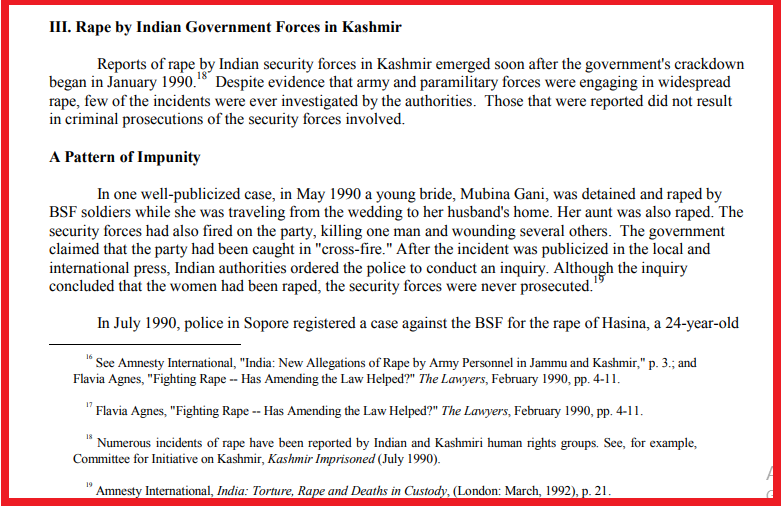
Extract from Human Rights Watch Report, 1993
There is little doubt that men in Kashmiri society already exercise power and control over women, much like the case in other parts of South-Asia.
However, as a result of the increased threat of sexual violence from the armed forces, Kashmiri men -in an attempt to protect them- feel obligated to exert more control over them. This is not a natural or organic development of thought in society. It reduces the negotiation space that women have and as a result, Kashmiri society has become more patriarchal. Therefore, patriarchy in Kashmir cannot be analysed without factoring in the role played by armed forces and conflict.
It is important to be vary of political parties like the BJP that appropriate the language of empowerment to propagate their fascist policies through misappropriation of feminist vocabulary. In a conflict zone like Kashmir state sponsored fashion shows do not reflect women empowerment. The true empowerment lies in providing safe spaces to voicing their dissent and their political and social concerns. India has consistently suppressed any political or social work done by Kashmiri women that is critical of state or one that demands accountability from state.
Silent March Protest
The fashion show led to a “silent march”[3] by a group of Kashmiri women. Around 60 women walked silently along the Boulevard Road in Srinagar protesting the fashion show. The protestors clarified that they were not part of any organisation and had spontaneously gathered to oppose the event because it allegedly sets a wrong precedent for the youth in Kashmir. Tahira Manzoor,[4] a protester told Anadolu Agency that dozens of like-minded women who were not representing any organization assembled to protest against the fashion show. “We told the cop that we are not forcing Hijab on to everyone but making women aware about the importance of Hijab.”
Advocate Sajid Yousuf, president of the All Jammu and Kashmir Youth Society (AJKYS) said that the fashion event was held to empower Kashmiris and provide career opportunities in modelling and Bollywood[5] to the local youth. The same Bollywood that Yousuf claimed would empower Kashmiri women, mocked and bullied[6] Zaira Waseem, a former Kashmiri actress, who decided to quit Bollywood. She was accused of being “brainwashed by Kashmiri Islamists” and having the audacity to disassociate herself from Bollywood.
It is essential we examine the realm of Bollywood’s cinematic representation, fetishization and exoticisation of Kashmiri men and women. Bollywood’s obsession with Kashmir in terms of the role played by a fetishized idea of Kashmir in the collective desires of the Indians has been the major misrepresentation of Kashmiri people which Indian masses have accepted. Numerous Hindi films have been shot in Kashmir. The plot of many such movies generally featured a romance between a visiting Indian man and a local Kashmiri woman (like Junglee, 1961; Kashmir Ki Kali, 1964), while Kashmiri woman was a gullible, fragile, and exotic fair skinned woman. This romanticised version of Kashmir also included the representation of Kashmiri men as extremists, radical Islamists, and militants (Haider 2014 Fanaa, 2006, Mission Kashmir, 2000). These movies presented Kashmiri men as untrustworthy and misguided. They represented Kashmiri men as politically dangerous terrorists. Such deeply ingrained stereotypes and repeated cinematic representation allows the perception of Kashmiri women as objects of desire in the Indian imagination, while simultaneously positing Kashmiri men as potential terrorists.
If attending a fashion show makes women exercise their choice, then a peaceful protest against it should also be recognised as a conscious and thoughtful choice. Women in hijab working as journalists, political activists or protesters are questioned and suppressed for their opinion and agency while a fashion show amidst a pandemic is projected as an initiative to uplift Kashmiri women. This is an opportunistic kind of “feminism” that centers colonial narratives and strips away the agency of women who are being colonised. In this case, it generalizes Kashmiri cultures, ignores the willful choice of Kashmiri Muslim women who prefer different ways of empowering themselves through numerous career choices other than fashion. It promotes the image of Kashmiri men as radical Muslims who don’t allow the women to take part in such fashion shows and the liberal Indians as the saviours. It appropriates women’s rights movements in the service of paternalism and occupation. We need to fight against such oppressive ideologies that use and abuse the idea of feminism to perpetuate cultural appropriation and homogeneity.
A. Khalil studies Theoretical Physics at Queen Mary University of London
[1] https://theprint.in/india/srinagar-fashion-show-sparks-protest-organiser-says-it-gives-showbiz-platform-to-youth/638182/
[2] https://www.hrw.org/sites/default/files/reports/INDIA935.PDF
[3] https://theprint.in/india/srinagar-fashion-show-sparks-protest-organiser-says-it-gives-showbiz-platform-to-youth/638182/
[4] https://thekashmirwalla.com/2021/04/ploy-to-turn-kashmir-into-hub-of-immorality-women-hold-protest-against-fashion-show/
[5] https://theprint.in/india/srinagar-fashion-show-sparks-protest-organiser-says-it-gives-showbiz-platform-to-youth/638182/
[6] https://www.firstpost.com/entertainment/zaira-wasim-row-problem-isnt-dangal-actors-decision-to-quit-bollywood-but-her-refusal-to-refuse-her-religion-6943611.html

